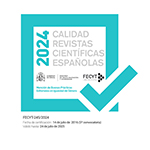Una nueva propuesta didáctica para la enseñanza de la pronunciación del inglés como lengua extranjera en la Universidad Nacional de Mar del Plata
Abstract
The objective of this work is to present a new proposal for the teaching of English pronunciation to Spanish speakers. This innovative proposal combines fluency-based tasks with accuracy-based activities followed by a period of refection and analysis. 35 student teachers enrolled in Discurso Oral II (a pronunciation course) at Universidad Nacional de Mar del Plata, participated in this study. The instruments of data collection were Pre-tests, Re-tests, statistical analysis, semi-structured interviews and students’ self-assessment reports. The findings in this study revealed that this pioneering approach for the teaching of suprasegmental phonology is more beneficial than traditional approaches.En francés: L’objectif de cet article est de présenter une recherche innovante en didactique pour l’enseignement de la prononciation de l’anglais langue étrangère à des hispanophones. On y propose des tâches qui combinent l’aisance et la correction linguistique, suivies d’une période de réflexion et d’analyse. Les participants étaient des étudiants de Discours Oral II, matière du curriculum de la formation de professeurs d’anglais, à l’Université nationale de Mar del Plata (Argentina). Les outils employés ont été des pre-tests, des re-tests, des analices statistiques, des enquêtes et autoévaluations des étudiants. Les résultats prouvent que cette approche est plus intéressante et bénéficie plus les étudiants que d’autres approches plus traditionnelles.
Downloads
Article download
License
In order to support the global exchange of knowledge, the journal Didáctica. Lengua y Literatura is allowing unrestricted access to its content as from its publication in this electronic edition, and as such it is an open-access journal. The originals published in this journal are the property of the Complutense University of Madrid and any reproduction thereof in full or in part must cite the source. All content is distributed under a Creative Commons Attribution 4.0 use and distribution licence (CC BY 4.0). This circumstance must be expressly stated in these terms where necessary. You can view the summary and the complete legal text of the licence.










